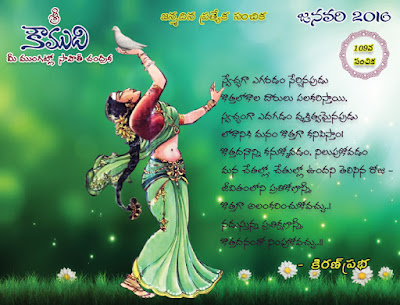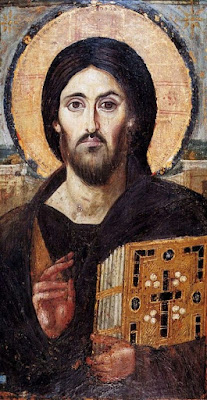EDUCATION MATTERS
Sandeep Pandey discusses the circumstances of his removal as a visiting professor and alleges that the RSS influenced the decision.
Scroll Staff · Today · 06:30 pm
'The RSS is conspiring to gain a hold of all academic institutions': Ousted BHU professor
Photo Credit: AFP
On December 21, Banaras Hindu University convened a board meeting and decided to show the door to Magsaysay award winner and visiting professor Sandeep Pandey, allegedly for his “anti-national activities”. Pandey had been teaching at the Indian Institute of Technology-BHU for two-and-a half years. He sparked a storm in the academic community with his allegation that his political ideology had him a target of the Narendra Modi government.
Here's what he told Scroll.
I am an alumnus of BHU only. I did my engineering from the same university in 1992-1996 and I have been teaching here since 2013 as a visiting faculty. My contract here was yearly and on renewable basis. I was teaching a few branches of chemical engineering and a development studies course which I floated during my tenure. There were more than 150 students registered for that course.
Last night [January 6], I received the formal communication from the university’s end that my tenure has been discontinued and there were no academic reasons given for it.
Ever since the current Modi government came into power, some sections have been trying to complain about me to the Ministry of Human Resources Development. The HRD minister Smriti Irani also called the Director Rajeev Sangal and told him that I am politically active and my actions need to be controlled.
In another instance, the Vice Chancellor GC Tripathi got miffed at me for sitting at a protest with 40 contract employees of BHU who were ousted recently. I just supported them but VC asked me why did I feel the need to go there. He even said that if I want to be Jayaprakash Narayan then I should quit the university and join politics.
In another meeting, Professor Dhananjay Pandey, who is associated with the Rashtriya Swayamsevak Sangh, went on to say that people who should be in jail are part of the faculty here but he didn’t take my name. But he didn’t renew my contract and it was delayed for three months before the director acted on it.
They have alleged that I am a Naxalite and involved in anti-national activities. They had decided long ago that I need to be shown the door, they were just looking for the right opportunity. In the meeting, they forced the director to remove me from my position.
The director was the one who appointed me and he was in my favour but people with RSS links pushed their way through. They don’t have any proof to back their allegations against me which is why their letter is so cleverly framed that it can’t be taken up in the court. It doesn’t mention any reason whatsoever but I am not going to be quieted down.
I will use the Right to Information to ask for the minutes of that meeting and if there are these allegations there then I will definitely move court on this.
Around 2002, I had attended an event of Communist Party of India (Marxist-Leninist) from where it all started. Back then, this was an underground organisation. Some families of former Naxalites were being felicitated in that meeting and I was merely on the stage there. And that’s when the RSS activists started saying that I am a Naxalite.
Moreover, I was in the citizens Defence Committee constituted for Prof SAR Gilani who was accused and later acquitted of all charges of his involvement in the Parliament attacks of 2001. They use that against me to say that I am an anti-national and a terrorist.
The real problem that the government and the right-wing agents is that I work among the students on the campus and fight on issues. I run a forum in the name of Acharya Narayan Dev who has been a VC of BHU, we discuss social and development issues like farmer suicides, poverty and economic inequality there. The forum was getting popular among the students.
We worked for small farmers, labourers who need help in fighting for their rights. We raised an agitation against Coca Cola, fought against land acquisition bill and organised marches.
They think that if I am not here, right-wing elements will be able to gain more ground in the campus. They are worried about securing their support among the students. Students have a nimble brain and they are attracted to the kind of ideologies they are exposed to and they want to expand their territory.
An ideological battle is being waged in our educational institutions. The RSS is trying to gain control over all institutions to propagate its own ideology. It’s sad that very incompetent people are being brought in at the helm of important institutions. Educational standards have gone out of the window. Nobody discussed any of my academic credentials and all the discussions revolved around just my political record and these baseless allegations. This is a conspiracy to take control over educational institutions and dominate the ideological discourse.
Going forward, I don't think I will fight for my job any longer even though I want to teach. It was a contractual thing so I don't see the point. But the larger battle for freedom of expression and human rights will continue.
As told to Mayank Jain.
We welcome your comments at letters@scroll.in.
Sandeep Pandey discusses the circumstances of his removal as a visiting professor and alleges that the RSS influenced the decision.
Scroll Staff · Today · 06:30 pm
'The RSS is conspiring to gain a hold of all academic institutions': Ousted BHU professor
Photo Credit: AFP
On December 21, Banaras Hindu University convened a board meeting and decided to show the door to Magsaysay award winner and visiting professor Sandeep Pandey, allegedly for his “anti-national activities”. Pandey had been teaching at the Indian Institute of Technology-BHU for two-and-a half years. He sparked a storm in the academic community with his allegation that his political ideology had him a target of the Narendra Modi government.
Here's what he told Scroll.
I am an alumnus of BHU only. I did my engineering from the same university in 1992-1996 and I have been teaching here since 2013 as a visiting faculty. My contract here was yearly and on renewable basis. I was teaching a few branches of chemical engineering and a development studies course which I floated during my tenure. There were more than 150 students registered for that course.
Last night [January 6], I received the formal communication from the university’s end that my tenure has been discontinued and there were no academic reasons given for it.
Ever since the current Modi government came into power, some sections have been trying to complain about me to the Ministry of Human Resources Development. The HRD minister Smriti Irani also called the Director Rajeev Sangal and told him that I am politically active and my actions need to be controlled.
In another instance, the Vice Chancellor GC Tripathi got miffed at me for sitting at a protest with 40 contract employees of BHU who were ousted recently. I just supported them but VC asked me why did I feel the need to go there. He even said that if I want to be Jayaprakash Narayan then I should quit the university and join politics.
In another meeting, Professor Dhananjay Pandey, who is associated with the Rashtriya Swayamsevak Sangh, went on to say that people who should be in jail are part of the faculty here but he didn’t take my name. But he didn’t renew my contract and it was delayed for three months before the director acted on it.
They have alleged that I am a Naxalite and involved in anti-national activities. They had decided long ago that I need to be shown the door, they were just looking for the right opportunity. In the meeting, they forced the director to remove me from my position.
The director was the one who appointed me and he was in my favour but people with RSS links pushed their way through. They don’t have any proof to back their allegations against me which is why their letter is so cleverly framed that it can’t be taken up in the court. It doesn’t mention any reason whatsoever but I am not going to be quieted down.
I will use the Right to Information to ask for the minutes of that meeting and if there are these allegations there then I will definitely move court on this.
Around 2002, I had attended an event of Communist Party of India (Marxist-Leninist) from where it all started. Back then, this was an underground organisation. Some families of former Naxalites were being felicitated in that meeting and I was merely on the stage there. And that’s when the RSS activists started saying that I am a Naxalite.
Moreover, I was in the citizens Defence Committee constituted for Prof SAR Gilani who was accused and later acquitted of all charges of his involvement in the Parliament attacks of 2001. They use that against me to say that I am an anti-national and a terrorist.
The real problem that the government and the right-wing agents is that I work among the students on the campus and fight on issues. I run a forum in the name of Acharya Narayan Dev who has been a VC of BHU, we discuss social and development issues like farmer suicides, poverty and economic inequality there. The forum was getting popular among the students.
We worked for small farmers, labourers who need help in fighting for their rights. We raised an agitation against Coca Cola, fought against land acquisition bill and organised marches.
They think that if I am not here, right-wing elements will be able to gain more ground in the campus. They are worried about securing their support among the students. Students have a nimble brain and they are attracted to the kind of ideologies they are exposed to and they want to expand their territory.
An ideological battle is being waged in our educational institutions. The RSS is trying to gain control over all institutions to propagate its own ideology. It’s sad that very incompetent people are being brought in at the helm of important institutions. Educational standards have gone out of the window. Nobody discussed any of my academic credentials and all the discussions revolved around just my political record and these baseless allegations. This is a conspiracy to take control over educational institutions and dominate the ideological discourse.
Going forward, I don't think I will fight for my job any longer even though I want to teach. It was a contractual thing so I don't see the point. But the larger battle for freedom of expression and human rights will continue.
As told to Mayank Jain.
We welcome your comments at letters@scroll.in.
Source: scrollin

















